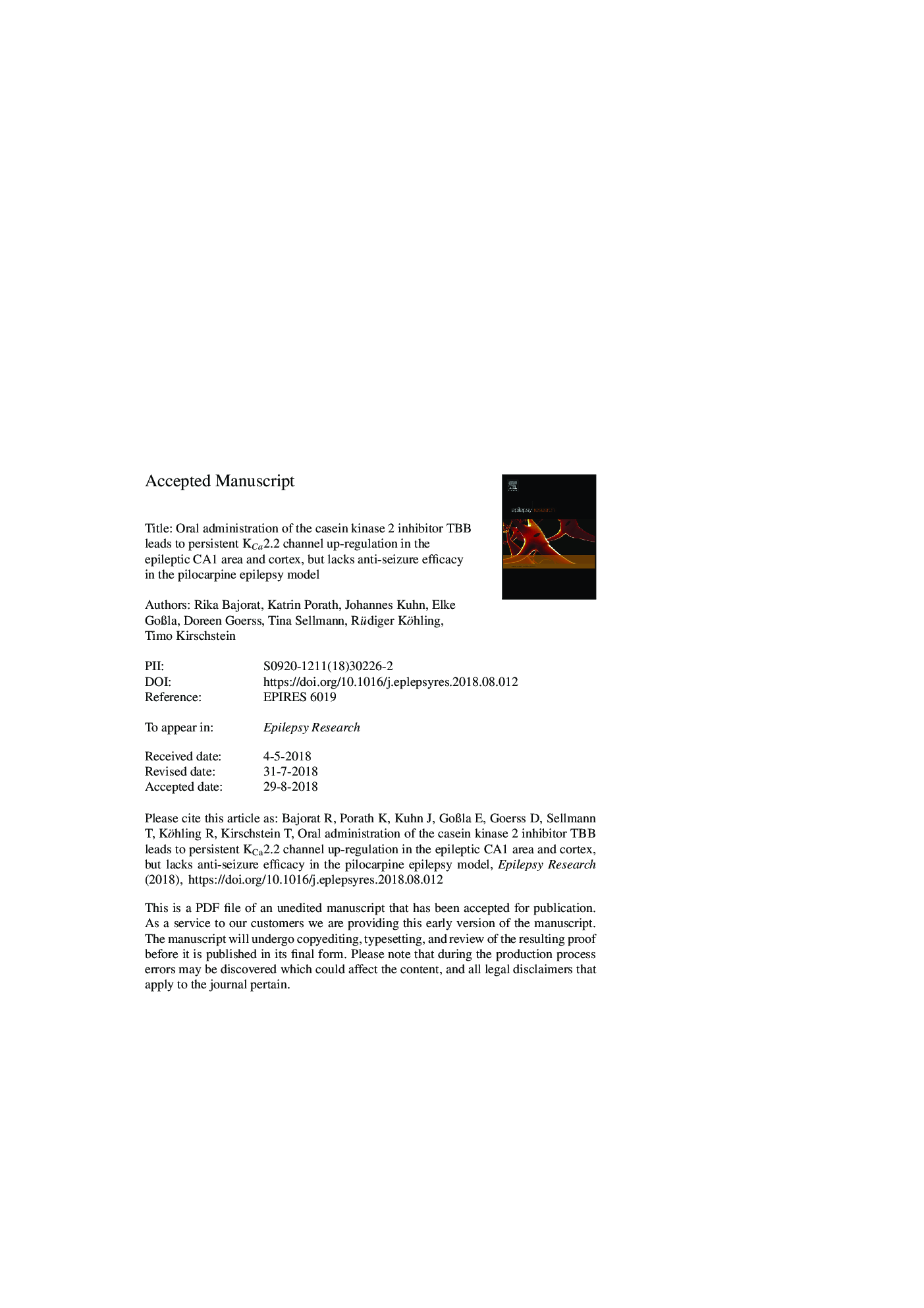| Article ID | Journal | Published Year | Pages | File Type |
|---|---|---|---|---|
| 10143780 | Epilepsy Research | 2018 | 31 Pages |
Abstract
Temporal lobe epilepsy (TLE) is the most common epileptic syndrome in adults and often presents with seizures that prove intractable with currently available anticonvulsants. Thus, there is still a need for new anti-seizure drugs in this condition. Recently, we found that the casein kinase 2 inhibitor 4,5,6,7-tetrabromotriazole (TBB) prevented the emergence of spontaneous epileptic discharges in an acute in vitro epilepsy model. This prompted us to study the anti-seizure effects of TBB in the pilocarpine model of chronic epilepsy in vivo. To this end, we performed long-term video-EEG monitoring lasting 78-167 days of nine chronically epileptic rats and obtained a baseline seizure rate of 3.3â±â1.3 per day (baseline of 27-80 days). We found a significant age effect with more pronounced seizure rates in older animals as compared to younger ones. However, the seizure rate increased to 6.3â±â2.2 per day during the oral TBB administration (treatment period of 21-50 days), and following discontinuation of TBB, this rate remained stable with 5.2â±â1.4 seizures per day (follow-up of 30-55 days). After completing the video-EEG during the follow-up the hippocampal tissue was prepared and studied for the expression of the Ca2+-activated K+ channel KCa2.2. We found a significant up-regulation of KCa2.2 in the epileptic CA1 region and in the neocortex, but in no other hippocampal subfield. Hence, our findings indicate that oral administration of TBB leads to persistent up-regulation of KCa2.2 in the epileptic CA1 subfield and in the neocortex, but lacks anti-seizure efficacy in the pilocarpine epilepsy model.
Related Topics
Life Sciences
Neuroscience
Neurology
Authors
Rika Bajorat, Katrin Porath, Johannes Kuhn, Elke GoÃla, Doreen Goerss, Tina Sellmann, Rüdiger Köhling, Timo Kirschstein,
